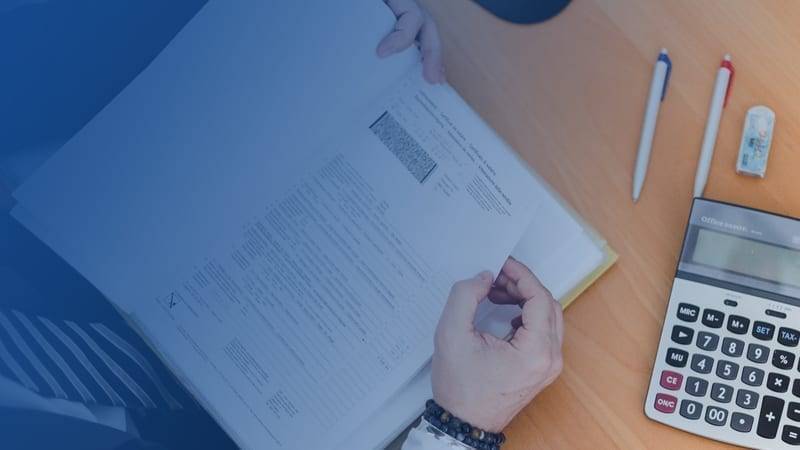On June 16, 2021, the FASB issued a proposed Accounting Standard Update (ASU), or amendment to ASC 842. The amendment affects private companies and not-for-profits that have not yet adopted ASC 842. The proposed change provides additional guidance and flexibility for determining the discount rate to apply to lease calculations for classification and measurement purposes.
Current state of ASC 842
ASC 842 currently states entities have the option to use the implicit rate of the lease or the incremental borrowing rate (IBR) to determine lease classification and lease measurement. While the implicit interest rate is the best representation of the economics of the lease agreement, it is not always readily determinable by the lessee due to the fact that the lessor may not want to share information that provides insight into what they are charging the lessee. The IBR is the rate the lessee would be charged to borrow a similar amount with similar risks and terms. Calculating the IBR can be a resource-intensive process.
Additionally, non-public entities also have the option to their risk-free rate as the discount rate for lease accounting. The risk-free discount rate is the rate an entity expects to earn from risk-free investments, such as treasury securities, over a period of time. While the implicit interest rate is applied on a lease by lease basis and the IBR can be applied on a portfolio level or to a grouping of leases with similar characteristics, the current guidance requires the election to use the risk-free rate to be applied to the entire lease portfolio only.
Proposed changes to ASC 842
The amendment proposed in mid-June provides non-public business entities the additional option to elect to apply the risk-free rate by class of underlying asset instead of entity-wide. In other words, a private entity would be able to elect to apply the risk-free rate to their office equipment or vehicle leases and then apply the IBR rate to their building or production equipment leases.
Also included in the amendment is the ability for a private entity to use the implicit rate of any individual lease when the implicit rate is readily determinable, regardless of whether the entity has made the election to apply the risk-free rate on a portfolio level or the IBR. This encourages non-public entities to use the intended rate of the lease when it is available.
The amendment offers another practical expedient to private entities to ease their burden to transition as the analysis to determine IBR was costly and complex for public entities and early adopters of ASC 842. The risk-free rate is commonly based off of the three-month treasury bill rate, one of the safer investments an entity can make, and therefore, much easier to determine than the IBR.
Another consideration for the proposed change relates to the economy in the wake of a pandemic. Because U.S. Treasury rates are lower than the average expected borrowing rates for private entities, electing to use the risk-free rate entity-wide could increase an entity’s lease liabilities and right-of-use assets. The amendment allows a non-public entity to strategically apply the risk-free rate to lower dollar value or a greater quantity of leases and calculate the IBR for fewer, more material leases, or however is most appropriate for their specific circumstances.
Post-implementation review of ASC 842
The amendment is a result of the FASB’s post-implementation review process. The objective of this process is to evaluate standards after implementation to analyze whether they have provided the financial information intended and whether the burden to implement is justifiable or improvements should be made. As part of the post-implementation review process, the FASB has made several updates related to ASC 842, including two extensions.
In September 2020, the FASB held a public roundtable, seeking feedback regarding ASC 842 from a wide range of stakeholders. Multiple clarifications and improvements to the standard were presented and discussed and the FASB staff was instructed to conduct additional research on several topics and present their findings and recommendations to the board. The FASB staff made multiple recommendations at the December 2, 2020 board meeting, one of which was the practical expedient to allow private entities to apply the risk-free rate on a class of underlying asset basis. During the meeting the board decided to move forward with the risk-free rate application election and have the staff continue researching some of the other recommendations.
As a follow up to the December board meeting, the exposure draft of the proposed amendment was published on June 16, 2021 and will remain open for comments for a period of one month, until July 16, 2021. At that time the comments will be reviewed by the FASB staff and the board will reconvene to discuss moving forward with the proposed amendment. Additional research and proposals for the other recommendations discussed have yet to be presented, but are expected.
Summary
ASC 842 was issued in February 2016 and the significant changes it makes to lease accounting are still being processed by the financial community as evidenced by the continued discussions regarding clarification and improvement. For this reason both public companies in their second or third year post adoption and private entities just beginning their implementation journey will benefit from a software solution, like LeaseQuery that allows lease accounting changes to be processed accurately and efficiently.











